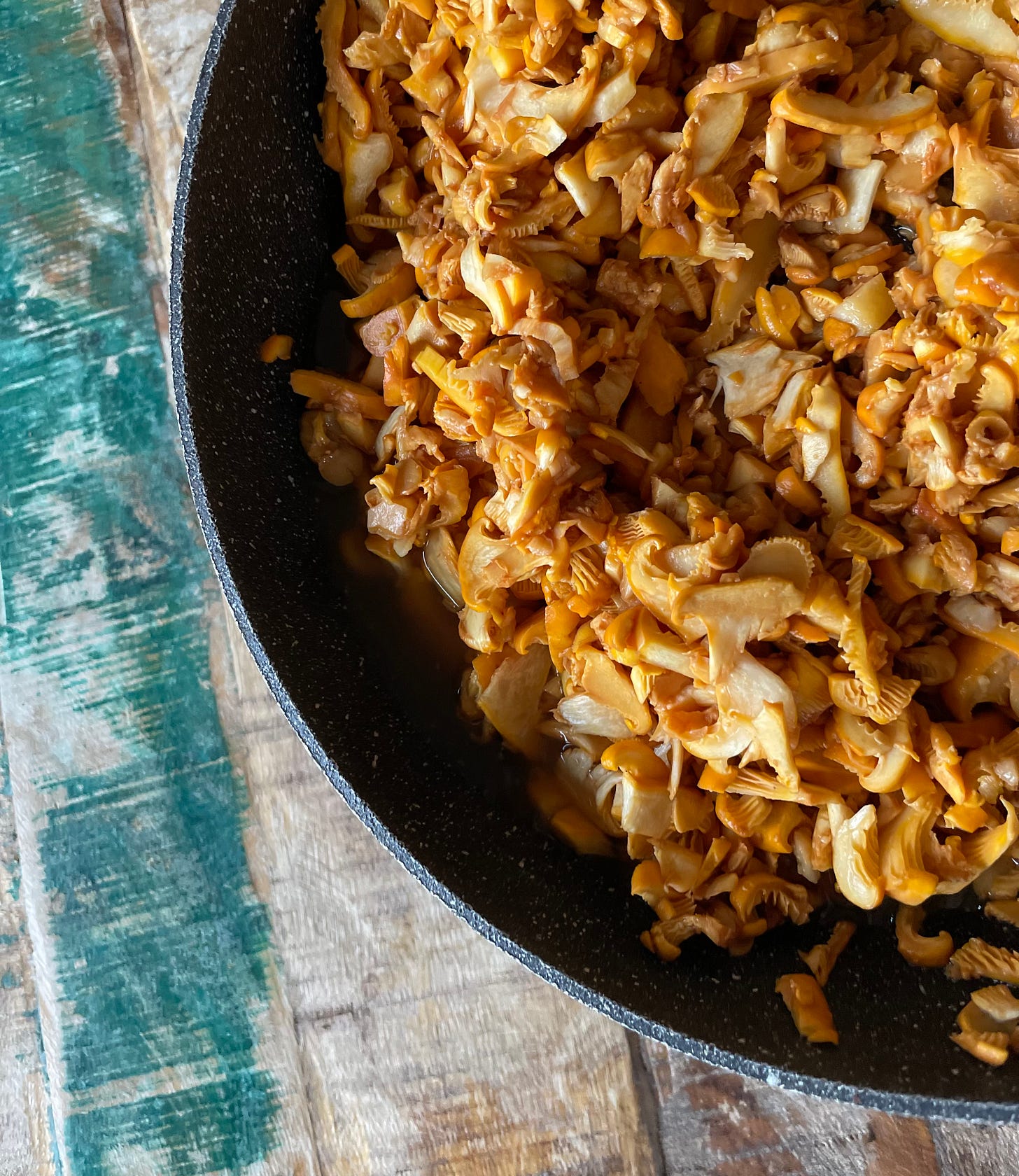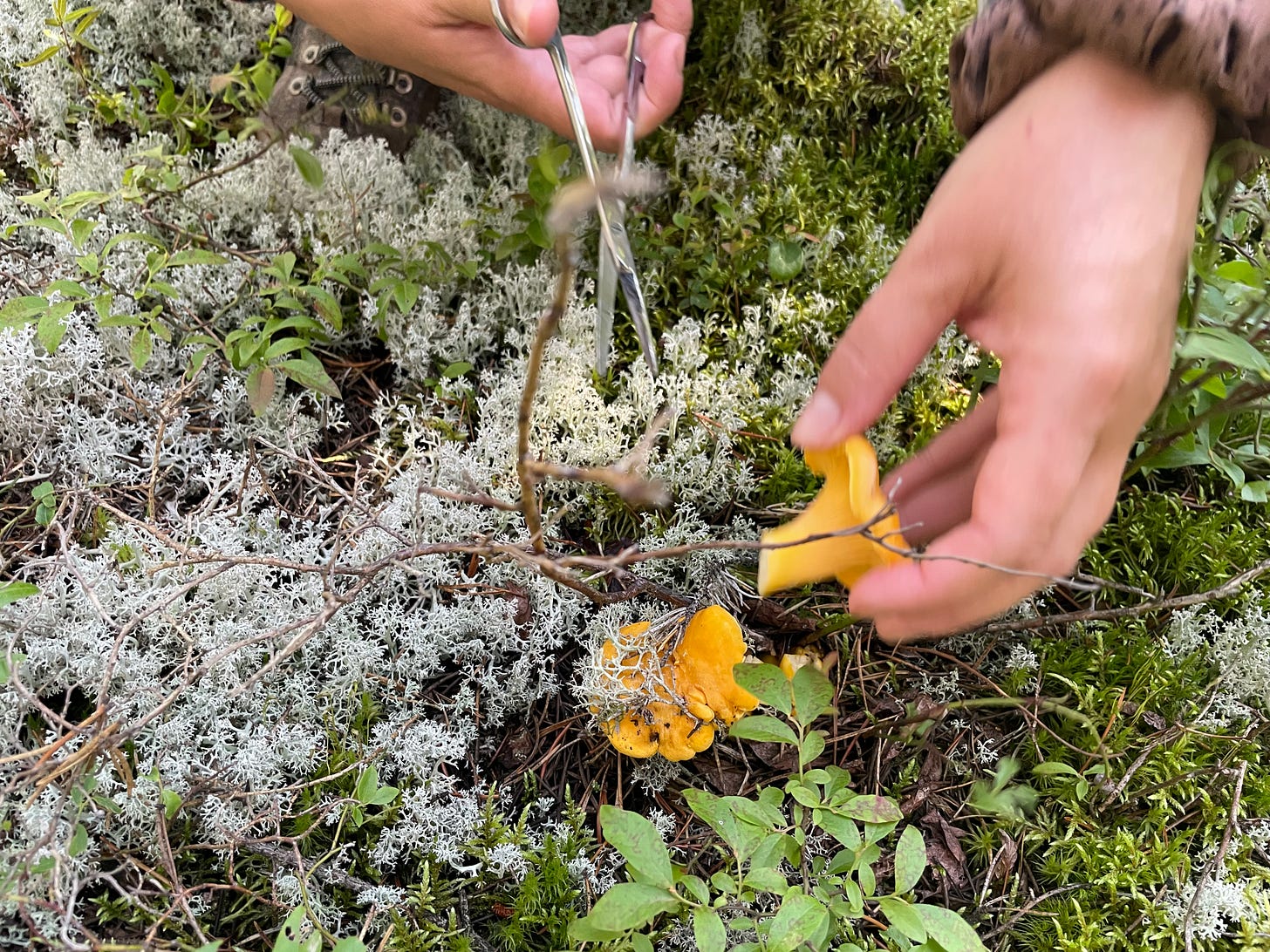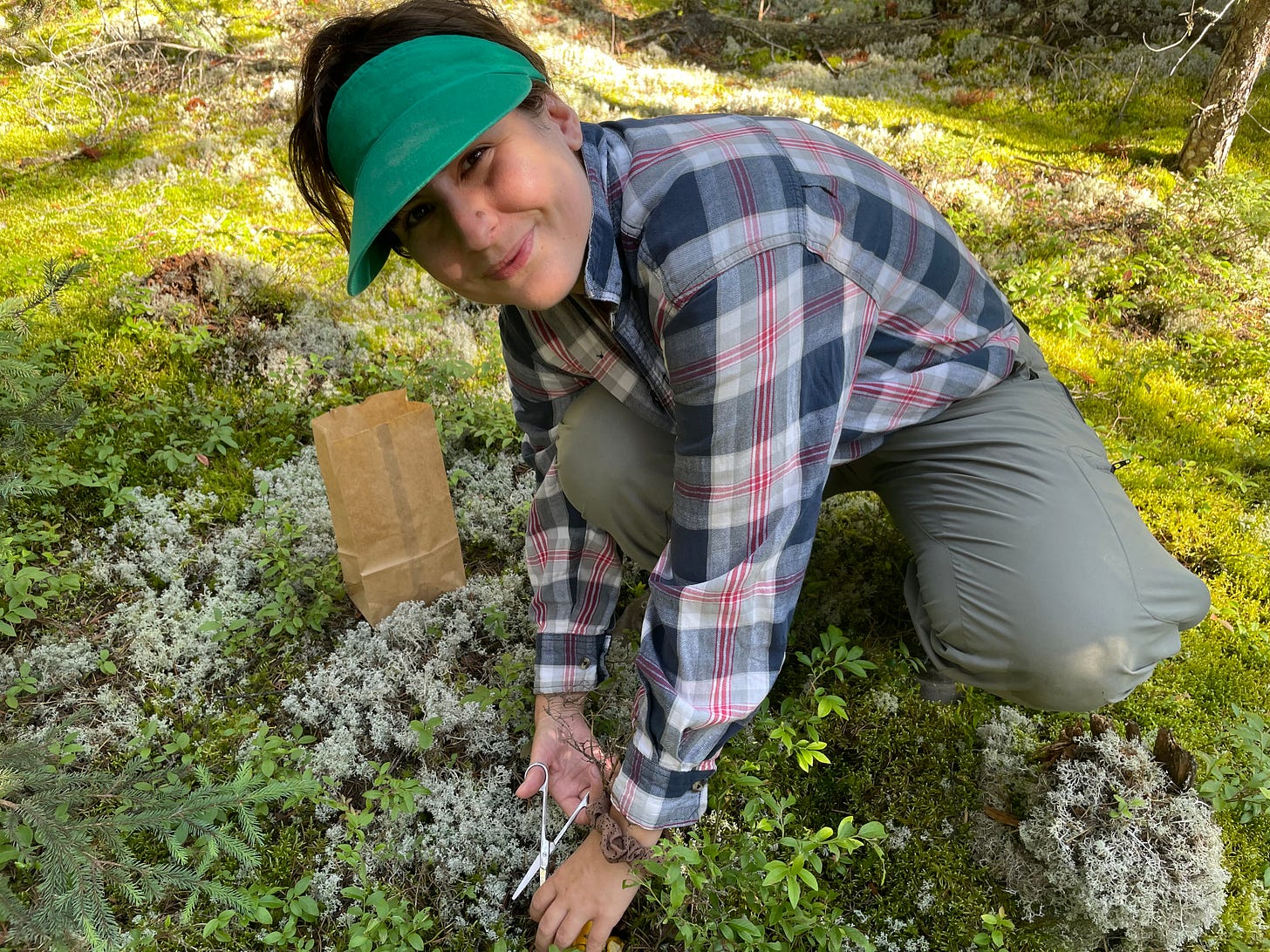The chanterelle (cantharellus) mushroom was abundant this year. A mushroom hunters dream of finding “golden” patches filled with this wild and sought after delicacy.
To preface, foraging comes with serious responsibility, to yourself and to the land.
Never consume anything without certainty that it is edible and not poisonous. When in doubt, throw it out.
Know your way in and out of the forrest. Tricks include, your phone, maps, flagging tape, having a knowledgeable guide with you, supplies in case you get lost and staying found: letting someone know you are going foraging.
Always remember the land we forage is not ours. It is borrowed. We must only take what we need and we must harvest responsibly.
When you find your first chanterelle, the feeling wells up inside of you. It’s wonderful and exciting.
Bring with you a paper bag and a pair of scissors. You will cut the chanterelle at the base of the stem. This ensures the root stays intact for spores to grow again.
What we harvested this year was about 50 fold what we harvested in previous years. The bounty was shared with multiple families and preserved properly, they will be enjoyed for the whole year.
Preparing your chanterelles is a labour of love. Get everyone involved if you can, it’s much less daunting.
Keep them dirty and in the sealed paper bag until you are ready to cook them. The sooner the better.
Before the cooking begins, there are a few crucial steps that need to happen.
First, lay them on a towel. Grab a dry and new paintbrush. (What?)
Yes, you will dry brush to get excess dirt and twigs off and out of the gills. Don’t worry if you miss some, this is only cleaning step 1 of 3. I promise, the time spent cleaning thoroughly is worth the effort.
Next, fill your sink with cold water. Give your chanterelles a little swim session and move them around to wash away additional debris.
Lay your chanterelles top side down on a towel to dry. You can leave them here anywhere between half an hour and 4 hours.
Next, set up your chopping station.
You will need a cutting board, a pairing knife, paper towels and a cookie sheet. I like to sit down at the dining room table for this stage of the processing.
One at a time, you will cut the tip of the stem off the chanterelle to remove any stuck on dirt.
Using the pairing knife or your finger, remove any debris that remain between the undersides gills. Necessary minutiae, be as thorough as you can.
Using the paper towel, wipe down the top of the mushroom.
That concludes the final cleaning step. I recommend completing this in its entirety before moving on to chopping the chanties.
Wipe down your cutting board and knife: it’s time to chop.
What i’ve learned with chanterelles regarding chopping size is this: smaller the better, you don’t want them too large. However, I believe it’s a matter of preference.
You can slice, dice or even shred. One of its distinct qualities is its string cheese-like flesh.
I place my cast iron skillet directly on the table to put the cut chanterelles into the cold pan.
Once all chanterelles are cut, its time to bring it to the heat and cook them down.
You can add olive oil or keep the pan dry, but I refrain from seasoning with salt until the very end.
Cook on medium-high heat for 20 minutes. The water will extract from the mushroom. I used to strain my chanterelle liquid and freeze it seperately but it’s much easier to continue cooking for another 15-20 minutes. This lets the liquid evaporate and reabsorb itself into the mushroom.
In the final moments of cooking you can add some salt, garlic or even worcestershire to elevate the natural nuttiness of the glorious and laborious chanterelle.
Once they’ve cooled off, it’s time to bag them in small ziplocks, push out any air by rolling them tightly and finally, sealing, labelling and freezing.
Open your ziplocks ahead of time for your mise en place. Try this muffin tin hack.
I typically freeze approx 7-8oz in one bag, I find this to be an appropriate portion for the amount of work that goes into having these available for consumption.
Once you’re ready to pull a bag out of the freezer, it needs to thaw.
Once ready, heat a skillet with one to two tbsp of butter and garlic, add your chanterelles, cook them until you’re happy with the texture and add them to risottos, omelettes, steaks, stews and winter salads.
Follow along as I write new recipes using my bounty of chanterelles.
Happy foraging and enjoy!
Foraging is a cost effective and sustainable way to eat and live off the land. Rising food scarcity and costs are the reason we need to look to and learn these forgotten practices.
Cuisinique is here to amplify and champion sustainable ways to consume and prepare your food.












